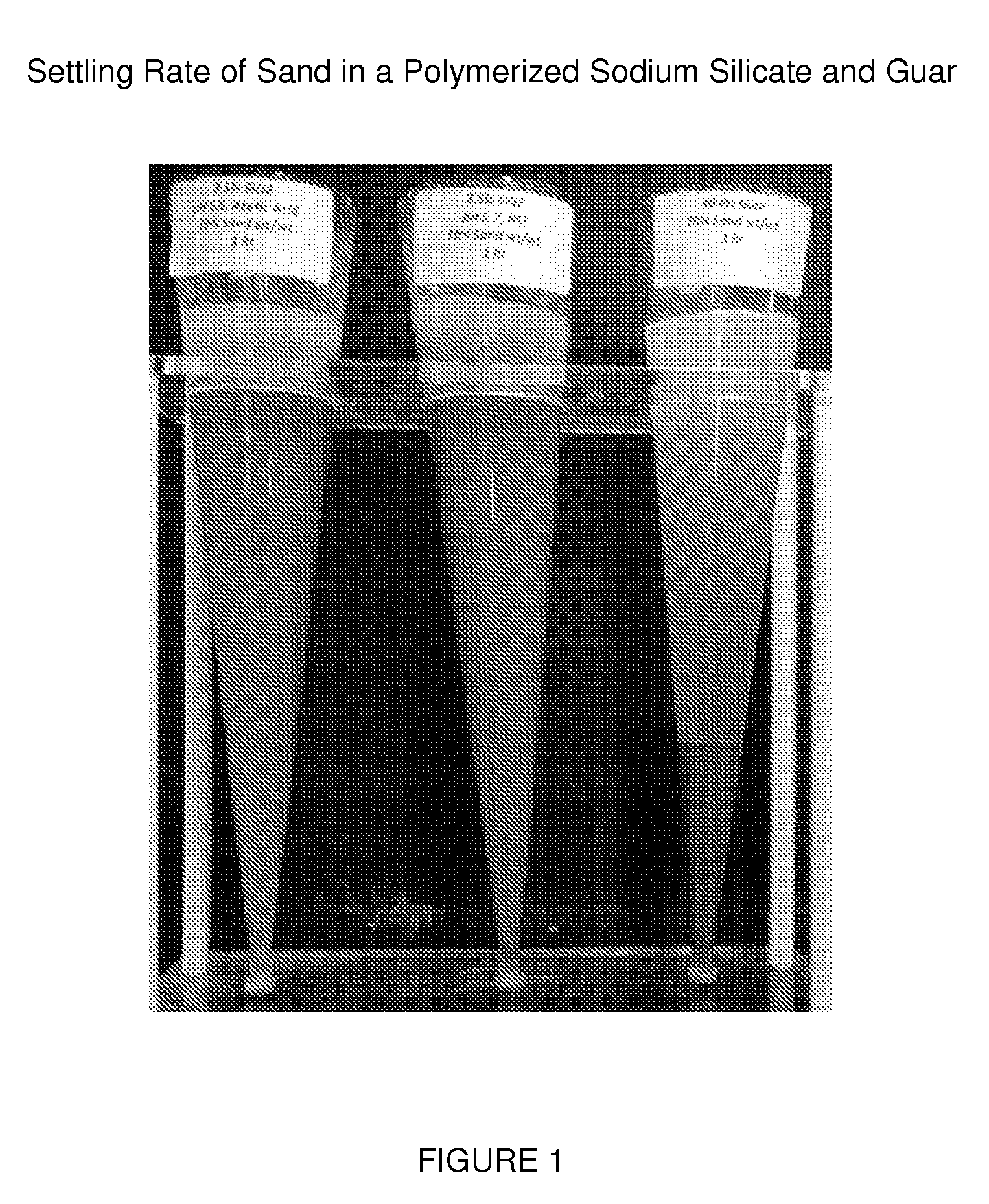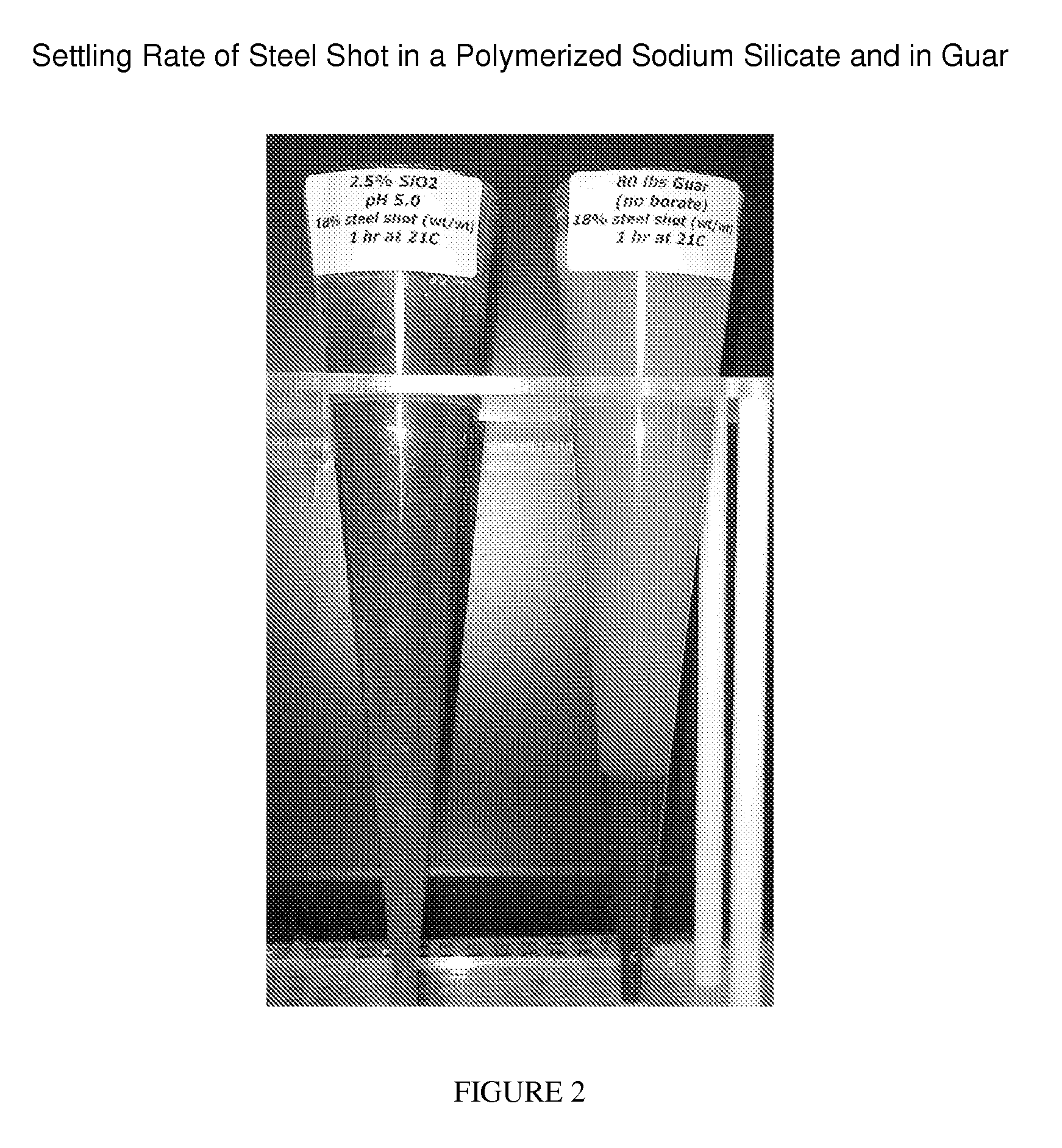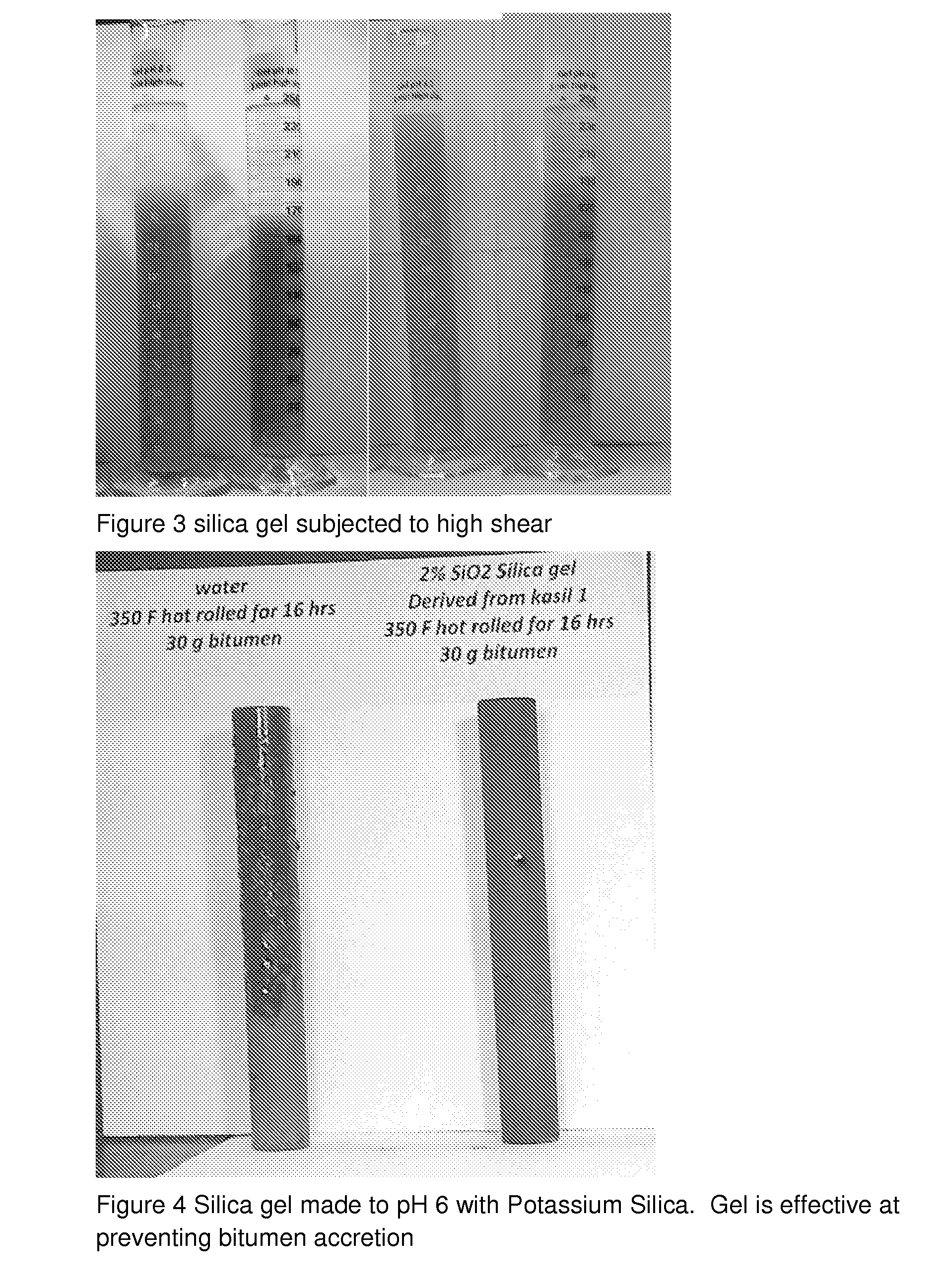Silica gel as a viscosifier for subterranean fluid system
a fluid system and viscosity technology, applied in the field of hydraulic fracture fluids, can solve the problems of increasing public scrutiny and government regulation of hydraulic fracturing, increasing cost, and particularly challenging high temperature reservoirs to maintain sufficien
- Summary
- Abstract
- Description
- Claims
- Application Information
AI Technical Summary
Benefits of technology
Problems solved by technology
Method used
Image
Examples
example 1
[0074]Useful silica gels can be made with any acid or acid generating material. As illustration, gels were made with technical grade acids of: hydrochloric acid, sulfuric acid, nitric acid, phosphoric acid and glacial acetic acid. Example 1 illustrates the selection of acid will affect gelation time and rheology properties. Example 1 demonstrates the greater yield point and carrying capacity of silica gels made to a pH range of 2.0 to less than 7.5 compared to silica gels made to a pH of 7.5 or higher. Silica gels were produced to the lower pH range by the alkalization of an acid solution with aqueous alkali silicate.
[0075]Tables 2a and 2b illustrate a silica gel produced to pH 4.0 and pH 6.0 from alkalization of diluted acid solutions with diluted sodium silicate. The acid solution was prepared by dilution different types of acids with 3% salt water based on formulated Wt. ratio of acid to N sodium silicate for target gel pH 4.0 and 6.0. A 4.0% SiO2 concentrate silica gel was produ...
example 2
[0077]It has been discovered that very high shear conditions improves the carrying capacity and stability of silica gels produced across all pH ranges. A portion of the silica gels produced in Example 1, were subjected to high shear conditions for 3 minutes and tested under the same conditions as Example 1. Tables 3a, 3b, 3c and 3d all show increases in carrying capacity and yield. FIG. 3 shows the sand carrying capacity of the different silica gels after being subjected to high shear.
TABLE 3aGel at 2.5% wt SiO2, pH 4.0 using 3% salt water, high shearGelShearPlasticYield% Sand SuspendedAcidTimeRateViscosityPoint1 hr24 hrsHCl165 min.High18569482H2SO4190High17109379HNO3 83High15589884H3PO4160High3153100100CH3COOH120High1211100100
TABLE 3bGel at 2.5% wt SiO2, pH 6.0 using 3% salt water, high shearGelShearPlasticYield% Sand SuspendedAcidTimeRateViscosityPoint1 hr24 hrsHClHigh16219382H2SO4High13109280HNO3High14299886H3PO4 1 minHigh14169580CH3COOH 4 minHigh20259581
TABLE 3cGel at 2.5 wt % S...
example 3
[0078]Example 3 demonstrates the useful silica gel can be made by diluting a 4.0% SiO2 concentrate to a final 1.5% SiO2 solution with a 3% solution of salt water.
[0079]Table 4 illustrates the 1.5% SiO2 silica gels made at pH range of 4.5 to 5.5 show increases in viscosity and carrying capacity by using high shear to mill the silica gel for 5 minutes.
TABLE 41.5 wt % SiO2 and pH 4.5 and 5.5, dilutions made with 3% salt waterGelGelShearViscosity% Sand SuspendedAcidpHTimeRatecP1 hr24 hrsHCl4.545 minLight1207866HCl5.5 3 minLight547466HCl4.545 minHigh3769884HCl5.5 3 minHigh1689574
PUM
 Login to View More
Login to View More Abstract
Description
Claims
Application Information
 Login to View More
Login to View More - R&D
- Intellectual Property
- Life Sciences
- Materials
- Tech Scout
- Unparalleled Data Quality
- Higher Quality Content
- 60% Fewer Hallucinations
Browse by: Latest US Patents, China's latest patents, Technical Efficacy Thesaurus, Application Domain, Technology Topic, Popular Technical Reports.
© 2025 PatSnap. All rights reserved.Legal|Privacy policy|Modern Slavery Act Transparency Statement|Sitemap|About US| Contact US: help@patsnap.com



